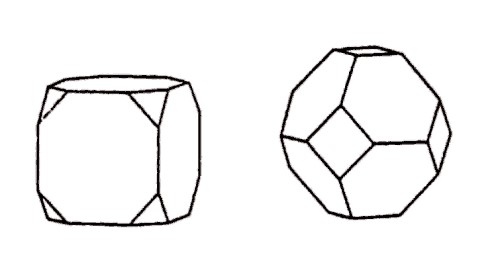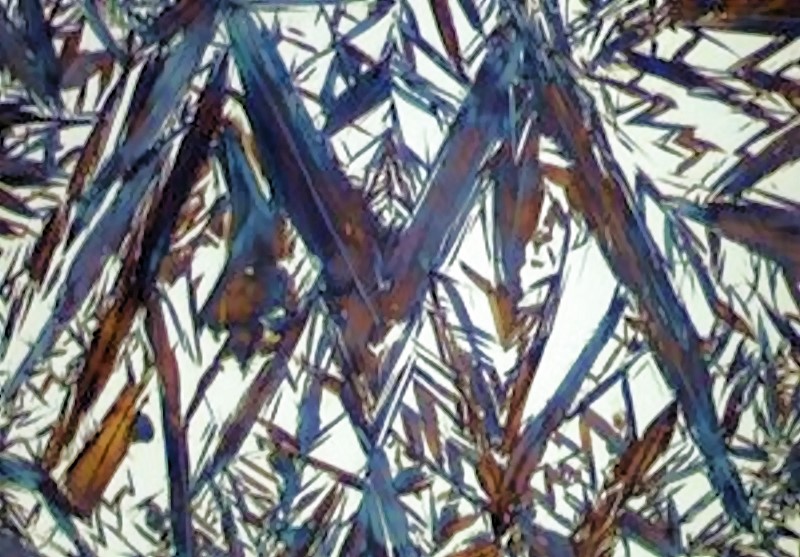Habit plane
The morphology of a crystal (see also Crystallite), i.e. its shape determined by the combination of surfaces and their dimensions, is described by the terms tracht and habit.
The rough shape in which a crystal occurs is known as habit. By contrast, the entirety of the crystal shapes of a crystal is referred to as tracht.
Fig. 1 illustrates the difference between tracht and habit. Both crystals are a combination out of a cube {100} and an octahedron {111}, i.e. they are crystals of the same tracht. On the left, you can see a cubic habit, while the right shape represents an octahedral habit.
Thus, tracht describes the quantity of surfaces (hkl) or surface shapes (crystal shapes) {hkl} present on a polyhedral crystal. Habit describes the shape of a crystal which is determined by the proportions of its individual shapes.
Typical habit terms are spiky, needle-like, prismatic, lamellar, flaky, cubic, spherical, etc. As an example, the plate plane of the martensite crystal (see Martensite) assumes a certain regular and defined position which is mainly dependent on the carbon content and other alloy elements (Fig. 2).
Literature references:
Sahm P., Egry I. Volkmann T. (ed.), Schmelze, Erstarrung, Grenzflächen: Eine Einführung in die Physik und Technologie flüssiger und fester Metalle, Braunschweig, Wiesbaden: Vieweg, 1999.



